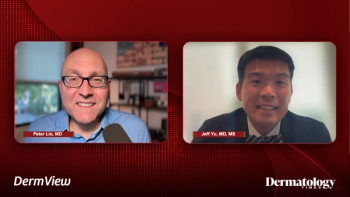
Current and Emerging CSU Therapies
An expert discusses how the evolving CSU treatment landscape includes H1 antihistamines as first-line therapy, omalizumab as second-line, and emerging treatments like dupilumab, remibrutinib, and barzolvolimab that target different mechanisms including mast cell depletion.
Episodes in this series

Video content above is prompted by the following:
The 2022 international urticaria treatment guidelines establish a clear therapeutic hierarchy for chronic spontaneous urticaria (CSU) management. First-line treatment consists of H1 antihistamines, followed by omalizumab (an anti-IgE antibody) as second-line therapy, and cyclosporine as third-line treatment for patients who fail to respond to omalizumab. However, many patients experience incomplete responses to these established treatments, achieving only partial improvement in symptoms like itch and wheals without complete disease clearance.
The CSU treatment landscape is rapidly evolving with several breakthrough therapies. Dupilumab, an IL-4/IL-13 inhibitor familiar to dermatologists, received FDA approval in April 2025 for CSU treatment, administered subcutaneously every 2 weeks. This approval represents a significant advancement, as type 2 cytokines can activate mast cells and cause neurogenic inflammation. Additionally, remibrutinib, a Bruton tyrosine kinase (BTK) inhibitor, has completed successful phase 3 trials published in the New England Journal of Medicine in March, with approval anticipated soon. This oral medication, taken twice daily, has demonstrated significant efficacy in CSU treatment.
These emerging therapies offer different mechanisms of action compared to traditional approaches. While cytokine-targeting biologics work indirectly by inhibiting inflammatory pathways, both KIT receptor and BTK inhibitors directly target the mast cell itself. This direct cellular targeting approach represents a paradigm shift in CSU treatment, potentially offering more comprehensive disease control for patients who have failed conventional therapies, including those with autoantibodies that activate mast cells through alternative pathways.
Newsletter
Like what you’re reading? Subscribe to Dermatology Times for weekly updates on therapies, innovations, and real-world practice tips.
















